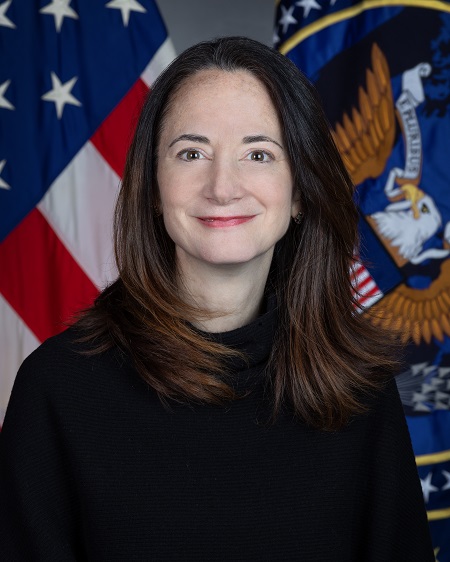Understanding the Role of the Director of National Intelligence (DNI) in 2024

In a world of growing security challenges and evolving threats, the role of the Director of National Intelligence (DNI) has never been more critical. From coordinating intelligence efforts to advising the President on life-or-death matters of national security, the DNI stands at the epicenter of U.S. strategy in 2023. Today, Avril Haines, the first woman to hold this influential position, leads the U.S. Intelligence Community (IC) as an advocate for strategic oversight and transparency.
The History and Establishment of the DNI
The current form of the DNI was born out of the post-9/11 landscape. The Intelligence Reform and Terrorism Prevention Act of 2004 created the office to address systemic intelligence failures within the U.S. government. Prior to this act, intelligence agencies, such as the CIA, NSA, and FBI, operated with varying levels of communication and cooperation. The law sought to unify these efforts under the leadership of a single individual—the DNI—who would serve as the head of the U.S. Intelligence Community and oversee the National Intelligence Program (NIP).
Since its inception, the role has been reshaped by different administrations, and controversial appointees like John Ratcliffe during the Trump era highlighted the ongoing challenges of melding politics with intelligence operations. In fact, some of the most public debates have occurred around appointments, sparking national conversations on the power held by this office. For instance, Ratcliffe's brief tenure from 2020 to early 2021 was a subject of much debate given concerns about partisanship within the intelligence community.
Avril Haines: Breaking Barriers in 2024
Fast forward to today, and Avril Haines is reshaping the office in ways that harken back to its original intent while also adapting to 21st-century challenges. Appointed by President Biden, Haines brings an impressive resume to the role. Having previously served as Deputy National Security Advisor and Deputy Director of the CIA, her experience in intelligence operations and national security is vast. Her leadership style has been characterized by an emphasis on coordination and transparency, focusing on strengthening the relationships between agencies in the Intelligence Community.
In 2023, Haines continues to play a vital role in addressing increasingly complex global threats, including cyber warfare, emerging terrorism, and geopolitical developments like the ongoing tensions between the U.S. and Russian forces in Eastern Europe. As head of the DNI, Haines also spearheads the efforts to modernize intelligence capabilities for an era increasingly dominated by digital and cyber threats.
The Critical Responsibilities of the DNI
The Director of National Intelligence has an expansive role by design. From overseeing billions of dollars allocated to the National Intelligence Program (NIP) to being the principal intelligence advisor to the President, the DNI wears many hats. Here are some of the key responsibilities:
- Coordination of the U.S. Intelligence Community (IC): The DNI ensures that there is effective communication and collaboration between the 18 agencies that make up the IC, such as the CIA, NSA, FBI, and others.
- Overseeing the National Intelligence Program (NIP): From budgeting decisions to program effectiveness, the DNI plays a significant role in making sure the NIP aligns with the country’s national security needs.
- Advising the President and National Security Council: In their capacity as intelligence advisor, the DNI provides crucial insights to assist the President and key officials in making informed decisions on pressing security matters.
Controversies and Political Influences
The office of the DNI has not historically been immune to political scrutiny. One of the more recent cases involved Tulsi Gabbard, a former Democratic congresswoman with conservative leanings, who was controversially floated as a potential DNI head under a hypothetical future administration of Donald Trump. This has raised debates about the politicization of intelligence appointments. Historically, the influence of politics in these appointments can significantly affect the strategies and priorities of the DNI office. Proponents of a non-political DNI argue that objectivity and impartiality are critical to maintain the overall integrity of the U.S. Intelligence Community.
The Future Outlook of the DNI
As we look toward the future, the role of the Director of National Intelligence is poised to become even more pivotal. Advances in artificial intelligence and data analytics increasingly shape how intelligence is gathered and utilized. In her speeches, Haines has repeatedly emphasized the need for the U.S. to innovate in this space to stay ahead of adversaries.
Moreover, with an increasingly fragmented global landscape and new forms of warfare, the balance between civil liberties and security will continue to challenge future Directors of National Intelligence. The importance of a DNI who is not just a political figure, but rather an experienced intelligence expert, cannot be understated for the future of U.S. national security.
Conclusion
The Director of National Intelligence remains at the forefront of safeguarding the national security of the United States in 2024. With Avril Haines leading the charge, the U.S. Intelligence Community is navigating a rapidly changing world, tackling everything from cybersecurity threats to complex geopolitical dynamics. As new challenges arise, the DNI’s mission to integrate and coordinate intelligence will continue to be paramount to the nation's survival and success.
For more detailed insights into the role of the Director of National Intelligence, visit the Foreign Policy Research Institute and the Office of the Director of National Intelligence.
